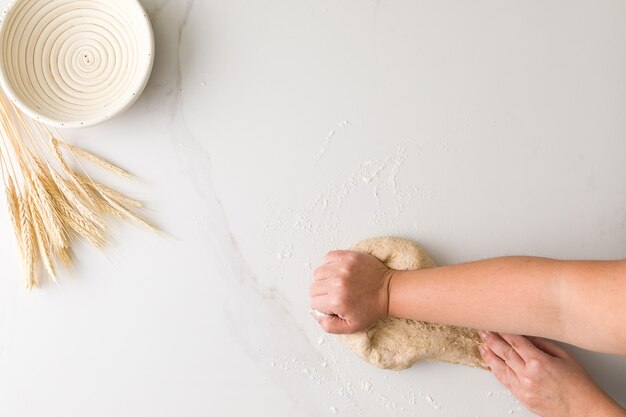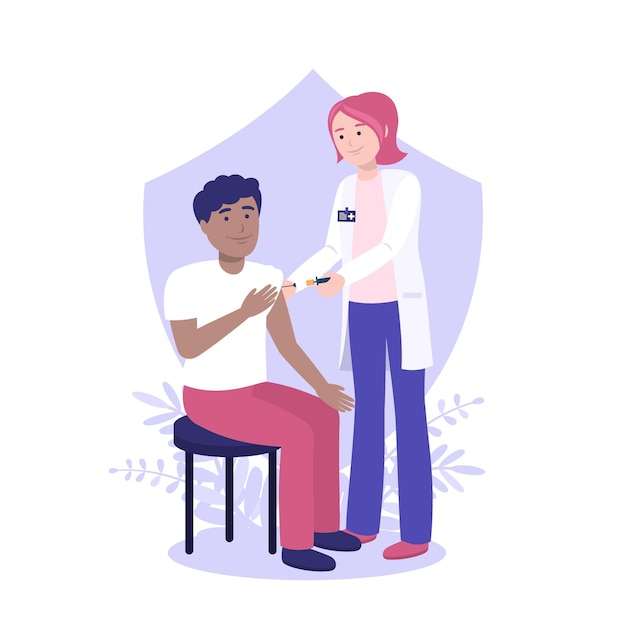Managing Arthritis Pain: The Latest Non-Surgical Advances

The latest advances in managing arthritis pain without surgery focus on holistic approaches, combining lifestyle modifications, physical therapy, innovative injections, and regenerative medicine to alleviate symptoms and improve joint function.
Are you tired of living with persistent arthritis pain? Seeking relief without resorting to surgery? This article explores the latest advances in managing arthritis pain without surgery, offering insights and practical solutions for a better quality of life.
Understanding Arthritis and Its Impact
Arthritis is a widespread condition affecting millions, particularly as they age. Understanding its different forms and impact is crucial for effective management.
Types of Arthritis
There are several types of arthritis, each with its unique characteristics and causes. The two most common are osteoarthritis and rheumatoid arthritis.
- Osteoarthritis: Often referred to as “wear and tear” arthritis, it results from the breakdown of cartilage, the cushioning tissue in joints.
- Rheumatoid Arthritis: An autoimmune disease where the body’s immune system attacks the joints, causing inflammation and pain.
- Other Forms: Include gout, lupus, psoriatic arthritis, and more, each requiring specific management strategies.
The Impact on Daily Life
Arthritis pain can significantly impact daily activities, affecting mobility, sleep, and overall quality of life. Recognizing these impacts is the first step towards seeking effective solutions.
Arthritis can limit your ability to perform simple tasks, making it challenging to enjoy life to the fullest. Addressing the pain and inflammation is essential for maintaining an active and independent lifestyle.
In summary, a comprehensive understanding of arthritis is crucial for navigating the latest non-surgical management advances and making informed decisions about your health.
Lifestyle Modifications for Pain Relief
Making strategic lifestyle changes can play a pivotal role in managing arthritis pain without surgery. These modifications can reduce inflammation, improve joint health, and enhance overall well-being.

Dietary Changes
Adopting a diet rich in anti-inflammatory foods can help alleviate arthritis symptoms. Certain foods have properties that can reduce inflammation and support joint health.
- Omega-3 Fatty Acids: Found in fish like salmon and flaxseeds, these fats can help reduce inflammation.
- Antioxidant-Rich Foods: Fruits and vegetables like berries, spinach, and broccoli are packed with antioxidants that combat inflammation.
- Foods to Avoid: Processed foods, sugary drinks, and excessive alcohol can exacerbate inflammation and should be limited.
Exercise and Weight Management
Regular exercise and maintaining a healthy weight are crucial for managing arthritis pain. Exercise strengthens muscles around the joints, providing support and stability.
Low-impact exercises like swimming, cycling, and walking are excellent choices for people with arthritis. They minimize stress on the joints while improving overall fitness.
In conclusion, integrating these lifestyle modifications into your daily routine can significantly improve your arthritis symptoms and overall quality of life.
Physical Therapy and Rehabilitation
Physical therapy is a cornerstone of non-surgical arthritis management, focusing on strengthening muscles, improving flexibility, and reducing pain. A tailored physical therapy program can significantly enhance joint function and mobility.
Tailored Exercise Programs
Physical therapists design exercise programs specifically tailored to address individual needs and limitations. These programs focus on strengthening the muscles around the affected joints, providing support and stability.
These programs often include range-of-motion exercises to improve flexibility and reduce stiffness. Regular exercise helps maintain joint function and prevent further deterioration.
Assistive Devices and Support
Physical therapists may recommend assistive devices such as braces, splints, or canes to provide support and reduce stress on the joints. These devices can help improve mobility and reduce pain during daily activities.
- Braces: Can provide support and stability to the affected joint, reducing pain and preventing further injury.
- Splints: Used to immobilize and support the joint, particularly during periods of rest or sleep.
- Canes: Help redistribute weight and reduce stress on the affected joint, improving balance and mobility.
Physical therapy plays a vital role in empowering individuals with arthritis to manage their condition effectively and improve their overall quality of life.
Innovative Injection Therapies
Innovative injection therapies offer targeted pain relief and inflammation reduction for those with arthritis. These treatments can provide significant improvements in joint function and mobility.
Corticosteroid Injections
Corticosteroid injections are commonly used to reduce inflammation and pain in the affected joint. These injections can provide rapid relief, making them a popular choice for managing acute flare-ups.
While corticosteroid injections can be effective for short-term pain relief, they are not a long-term solution and should be used judiciously. Repeated injections may have potential side effects.
Hyaluronic Acid Injections
Hyaluronic acid injections, also known as viscosupplementation, involve injecting hyaluronic acid into the joint. This substance helps lubricate the joint and reduce friction, providing pain relief and improved mobility.

Hyaluronic acid is a naturally occurring substance in the joint fluid, and these injections aim to restore its lubricating properties. The effects can last for several months, offering sustained relief.
In conclusion, innovative injection therapies can be a valuable tool in managing arthritis pain, offering targeted relief and improved joint function.
Regenerative Medicine Options
Regenerative medicine offers promising avenues for arthritis management by harnessing the body’s own healing capabilities. These therapies aim to repair and regenerate damaged joint tissues, providing long-term relief and improved function.
Platelet-Rich Plasma (PRP) Therapy
PRP therapy involves injecting a concentrated solution of platelets into the affected joint. Platelets contain growth factors that promote tissue repair and reduce inflammation.
PRP therapy has shown promising results in reducing pain and improving joint function in people with osteoarthritis. It is a minimally invasive procedure with the potential for long-term benefits.
Stem Cell Therapy
Stem cell therapy involves using stem cells to regenerate damaged cartilage and other joint tissues. Stem cells have the unique ability to differentiate into various cell types, promoting tissue repair and regeneration.
- Source of Stem Cells: Stem cells can be harvested from bone marrow, fat tissue, or blood.
- Potential Benefits: Stem cell therapy aims to restore joint structure and function, providing long-term pain relief and improved mobility.
Regenerative medicine options hold significant promise for treating arthritis and offer hope for those seeking long-term relief and improved joint health.
Supplements and Alternative Therapies
Exploring different supplements and alternative therapies can complement conventional arthritis management strategies. These approaches offer additional avenues for pain relief and improved well-being.
Glucosamine and Chondroitin
Glucosamine and chondroitin are popular supplements often used to manage arthritis symptoms. They are believed to help protect and rebuild cartilage, reducing pain and improving joint function.
While research findings have been mixed, many individuals report experiencing relief from arthritis pain with glucosamine and chondroitin supplements. They are generally considered safe for long-term use.
Acupuncture and Massage
Acupuncture and massage are alternative therapies that can help alleviate arthritis pain and improve overall well-being. Acupuncture involves inserting thin needles into specific points on the body to stimulate energy flow and reduce pain.
Massage therapy can help relax muscles, improve circulation, and reduce pain and stiffness in the affected joints. Both therapies are often used as complementary treatments to conventional arthritis management strategies.
In conclusion, supplements and alternative therapies can offer additional support for managing arthritis symptoms and improving overall quality of life.
| Key Point | Brief Description |
|---|---|
| 💪 Exercise | Low-impact exercises like swimming and walking help strengthen muscles around joints. |
| 💉 Injections | Corticosteroid and hyaluronic acid injections provide targeted pain relief. |
| 🌱 Diet | Anti-inflammatory foods, such as omega-3s, help reduce arthritis symptoms. |
| 🌿 Supplements | Glucosamine and chondroitin are used to protect and rebuild cartilage. |
Frequently Asked Questions (FAQ)
▼
The first step involves consulting with a healthcare professional for an accurate diagnosis and personalized treatment plan. This helps tailor strategies to your specific condition.
▼
High-impact exercises and activities that put excessive stress on your joints should be avoided. Opt for low-impact exercises like swimming and cycling instead.
▼
Dietary changes can be quite effective in managing arthritis pain, especially when focusing on anti-inflammatory foods and avoiding processed foods. It can improve your overall well-being.
▼
Repeated corticosteroid injections can lead to cartilage damage, increased risk of infection, and weakening of tendons. They should be used sparingly under medical guidance.
▼
The effects of hyaluronic acid injections typically last for several months, providing lubrication and reducing friction in the joint. It’s a great way to improve mobility long term.
Conclusion
Managing arthritis pain without surgery involves a multifaceted approach, incorporating lifestyle modifications, physical therapy, innovative injections, regenerative medicine, and alternative therapies. By embracing these strategies, individuals can effectively alleviate pain, improve joint function, and enhance their overall quality of life.
